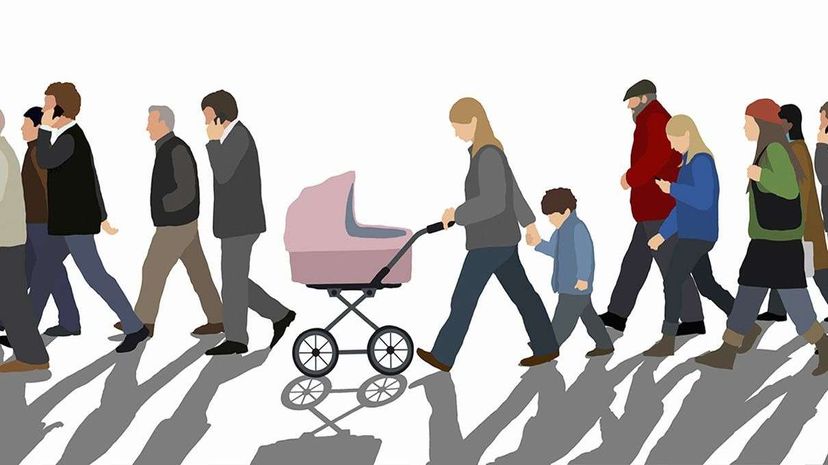
Human movement is complex, and yet we constantly draw pretty accurate conclusions about people based on how they move. If you've ever watched John Travolta strut to the Bee Gees at the end of "Saturday Night Fever," for instance, you know the other hour and 57 minutes of character development in that movie is kind of superfluous. That walk tells you all you need to know.
Most people walk. But that seemingly simple act is actually a highly coordinated series of movements that each require their own timing and path. Not only that, everybody you know has a special style of walking, — think John Wayne's distinctive amble, or Gisele Bündchen's runway stride — and if you know them well enough, you can probably identify them by their movements, even from far away.
Advertisement
For instance, if your mom and sister were walking side-by-side a block ahead of you, it's likely you'd be able to tell them apart based on movement alone. It's even possible you'd be able to discern from that distance that your sister is in a bad mood and your mom is distracted by something.
Science suggests locomotion may be able to predict something deeper than someone's temporary mood. Although humans have a great built-in system for understanding movement, a new paper published in the Journal of Nonverbal Behavior presents a technique for making assumptions about a person's entire personality based on their walk. The 29 study participants first took the Big Five Inventory, a commonly used personality test that can help predict patterns in a person's thought and behaviour (conscientiousness), social skills (agreeableness), propensity to worry (neuroticism), creativity and intellect (openness) and extraversion (sociability and assertiveness). The researchers then recorded and analyzed the gaits of each participant on a treadmill.
"We found that larger relative-upper-to-lower body movement was a strong predictor of aggression," says co-author Liam Satchell, a PhD student in the Department of Psychology at the University of Portsmouth. "Similarly, we found large amounts of pelvic movement alone predict social-facing traits like extraversion and agreeableness."
Of course, we use people's walks to predict things about their personalities all the time, but this research helps pick apart and mathematically explain previous research where "distinctive" gait was helpful in predicting impending crimes in footage from security cameras. If security personnel were trained in recognizing aggressive gaits, Satchell argues, they might be able to prevent crimes before they happened.
"The results of the study have some nice surprises," says Satchell. "For us the critical message is this: there's definitely evidence of personality in gait. It could well be the case that a further scientific exploration of body language could reveal more empirical evidence that the behaviors of another person can be predicted from how they move through space."
One such study has come out recently. The journal PLOS Computational Biology published a model that can generally predict the probability of the path and timing of the parts of the movement shared by all people, and even the movements shared by people who have similar personality traits or are in the same moods — like particularly aggressive people, or people who are feeling grouchy. By modelling what's normal, the researchers created a framework for identifying movements that differ from the norm and are unique to a particular person or to someone who's acting really weird.
"Automated computer analysis of human movement has shown promise in threat identification, like in identifying possible terrorists from video surveillance," says Dr. Lars Lau Rakêt, a postdoctoral researcher in the Department of Mathematical Sciences at the University of Copenhagen. "In our proposed model, we can combine information from thousands of movement patterns to extract precise information about the structure of the movement, which ultimately allows us to judge whether the movement of an individual differs significantly from what we would expect to see in a given situation."
And while there's nothing particularly scientific nor revealing about the gaits on display in this clip below, we'd be remiss to avoid any mention of the Ministry of Silly Walks:
Advertisement
